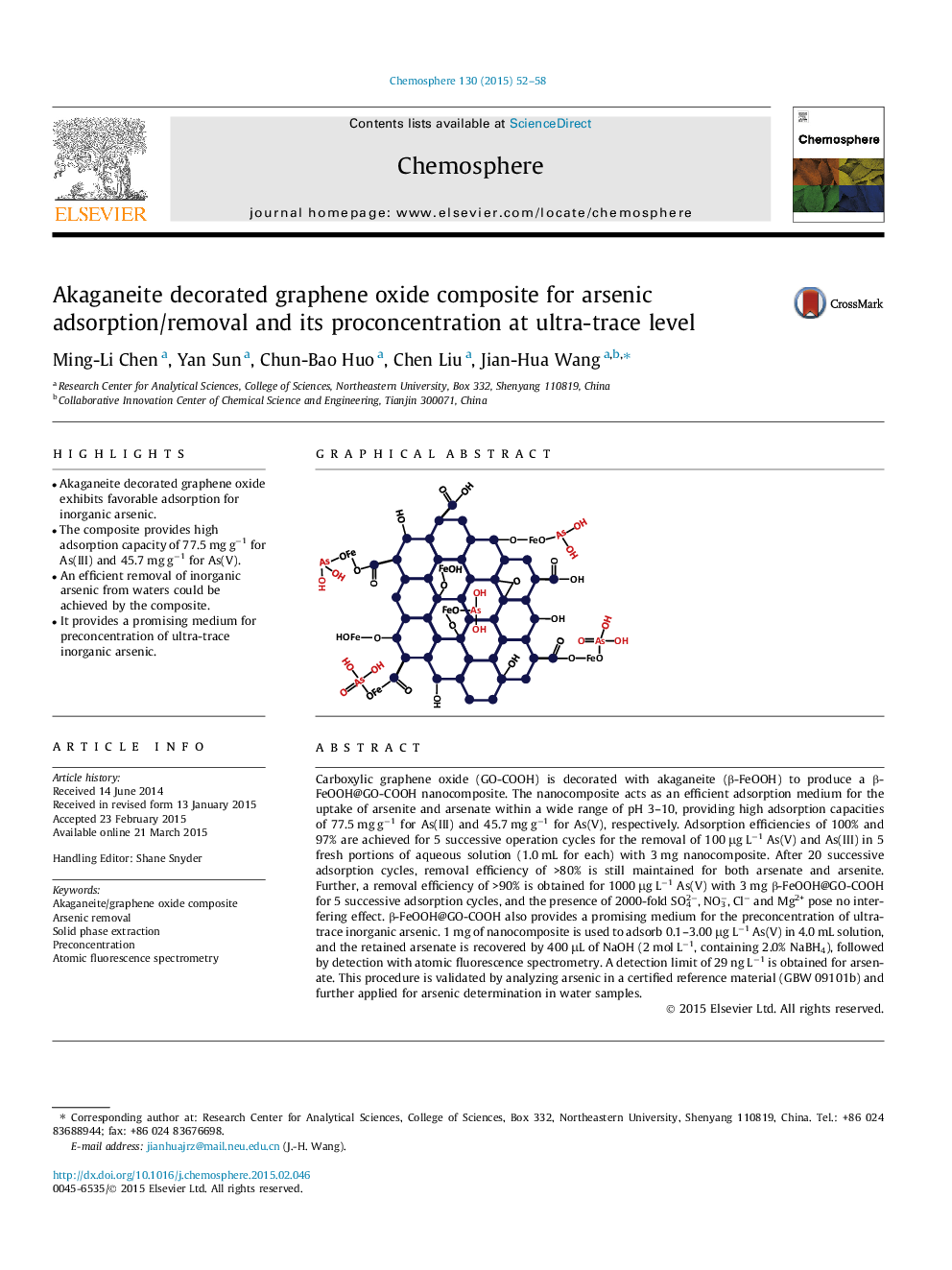| کد مقاله | کد نشریه | سال انتشار | مقاله انگلیسی | نسخه تمام متن |
|---|---|---|---|---|
| 4408323 | 1618841 | 2015 | 7 صفحه PDF | دانلود رایگان |

• Akaganeite decorated graphene oxide exhibits favorable adsorption for inorganic arsenic.
• The composite provides high adsorption capacity of 77.5 mg g−1 for As(III) and 45.7 mg g−1 for As(V).
• An efficient removal of inorganic arsenic from waters could be achieved by the composite.
• It provides a promising medium for preconcentration of ultra-trace inorganic arsenic.
Carboxylic graphene oxide (GO-COOH) is decorated with akaganeite (β-FeOOH) to produce a β-FeOOH@GO-COOH nanocomposite. The nanocomposite acts as an efficient adsorption medium for the uptake of arsenite and arsenate within a wide range of pH 3–10, providing high adsorption capacities of 77.5 mg g−1 for As(III) and 45.7 mg g−1 for As(V), respectively. Adsorption efficiencies of 100% and 97% are achieved for 5 successive operation cycles for the removal of 100 μg L−1 As(V) and As(III) in 5 fresh portions of aqueous solution (1.0 mL for each) with 3 mg nanocomposite. After 20 successive adsorption cycles, removal efficiency of >80% is still maintained for both arsenate and arsenite. Further, a removal efficiency of >90% is obtained for 1000 μg L−1 As(V) with 3 mg β-FeOOH@GO-COOH for 5 successive adsorption cycles, and the presence of 2000-fold SO42−, NO3−, Cl− and Mg2+ pose no interfering effect. β-FeOOH@GO-COOH also provides a promising medium for the preconcentration of ultra-trace inorganic arsenic. 1 mg of nanocomposite is used to adsorb 0.1–3.00 μg L−1 As(V) in 4.0 mL solution, and the retained arsenate is recovered by 400 μL of NaOH (2 mol L−1, containing 2.0% NaBH4), followed by detection with atomic fluorescence spectrometry. A detection limit of 29 ng L−1 is obtained for arsenate. This procedure is validated by analyzing arsenic in a certified reference material (GBW 09101b) and further applied for arsenic determination in water samples.
Figure optionsDownload as PowerPoint slide
Journal: Chemosphere - Volume 130, July 2015, Pages 52–58